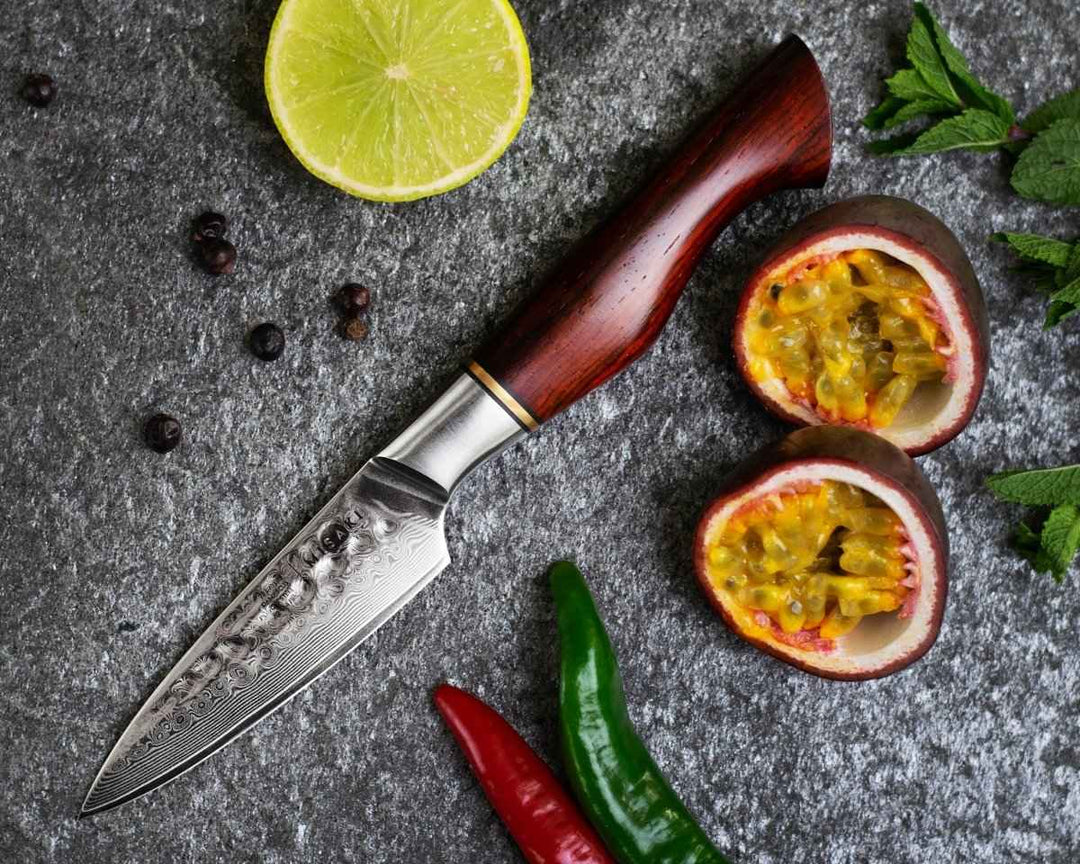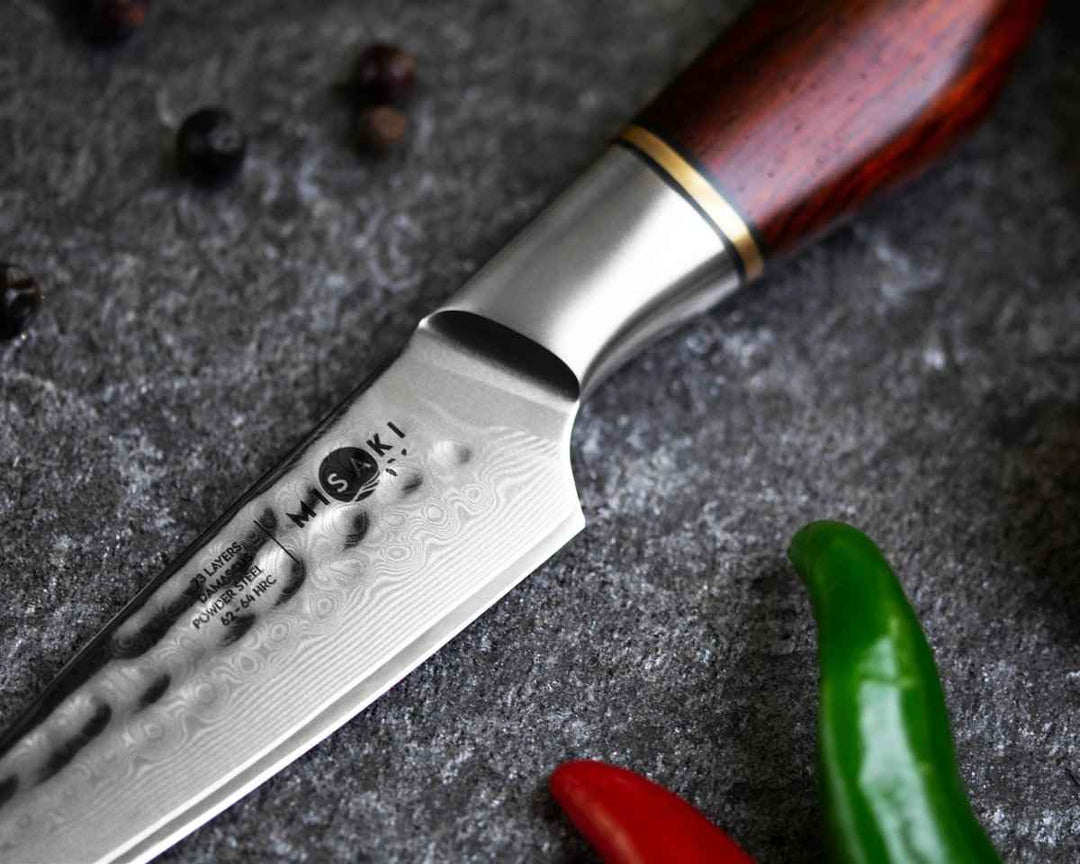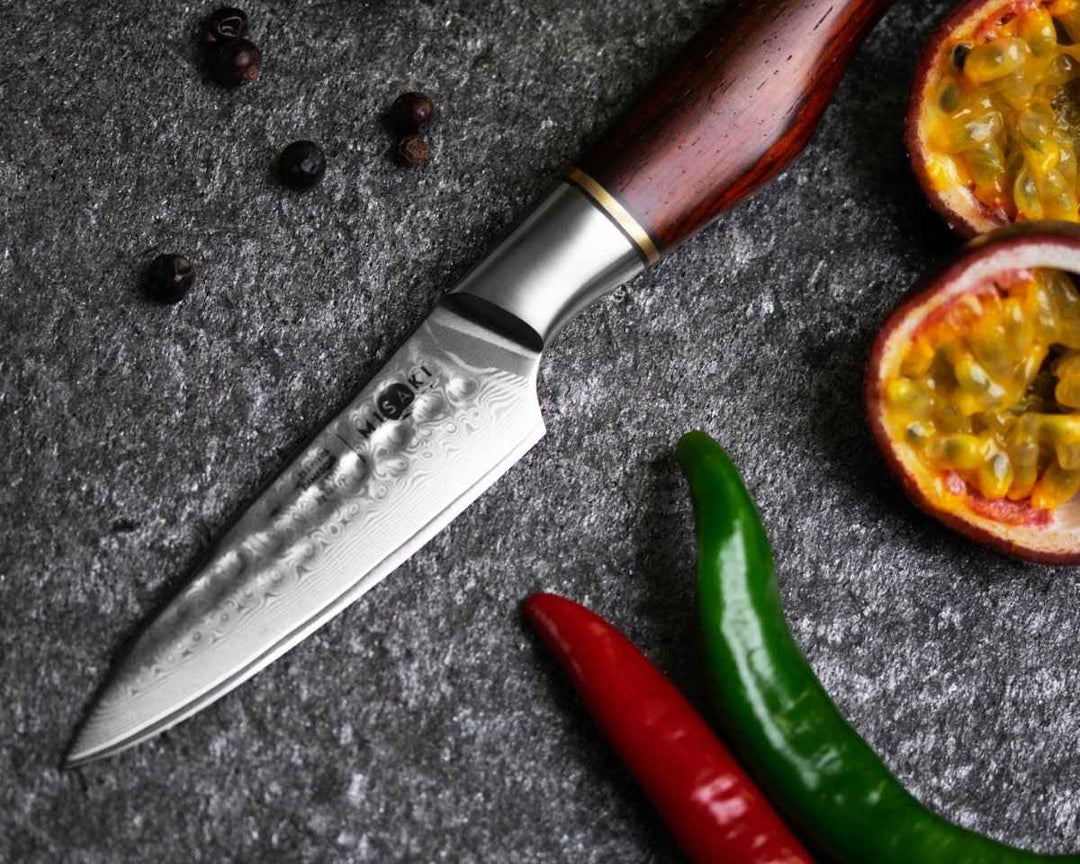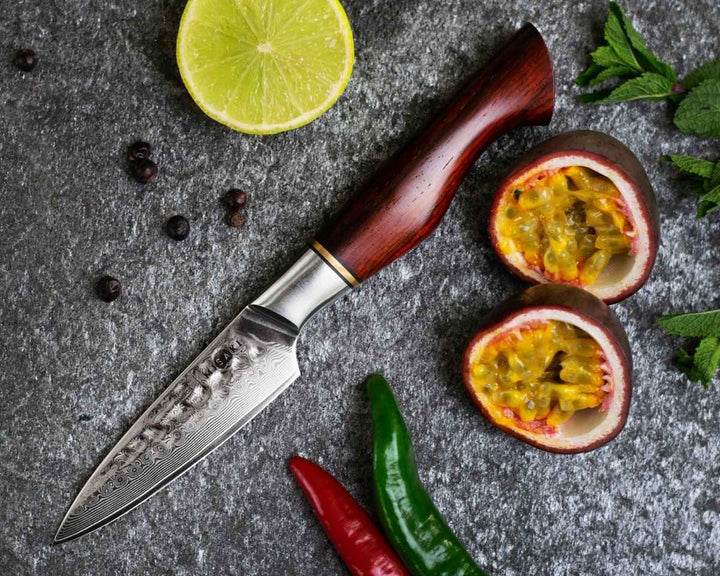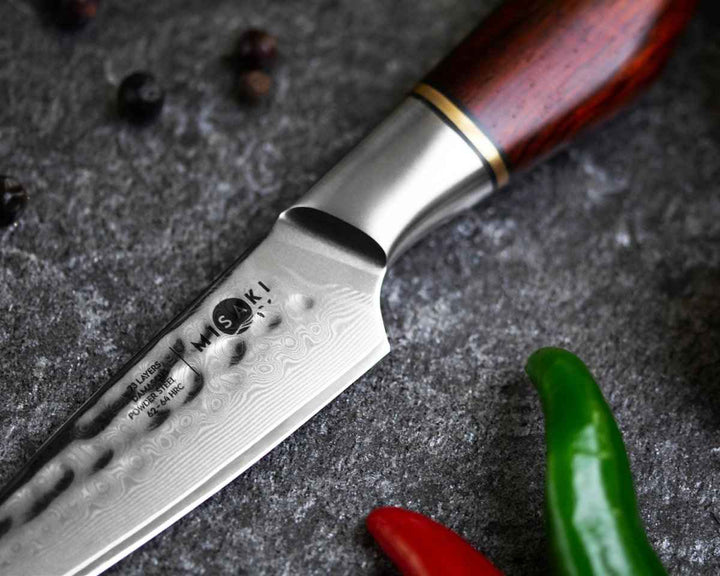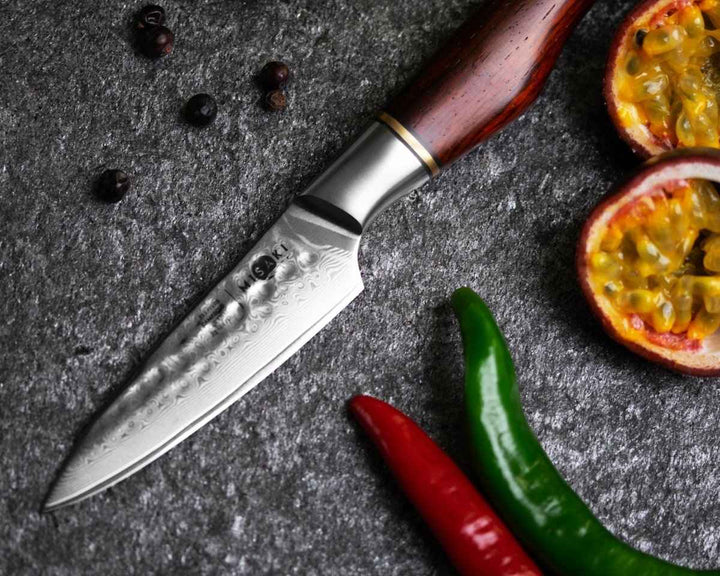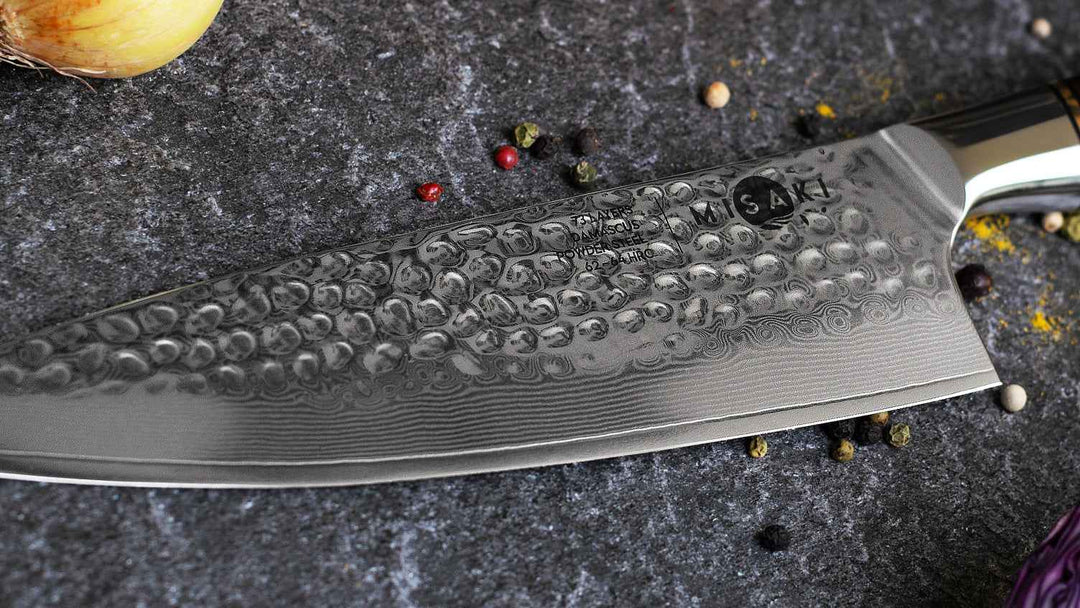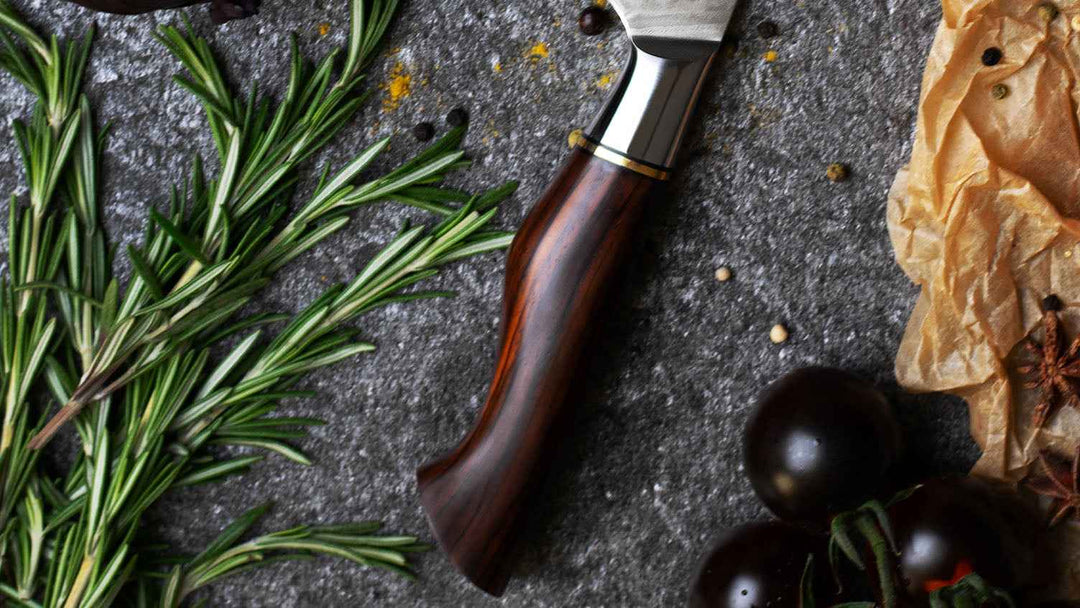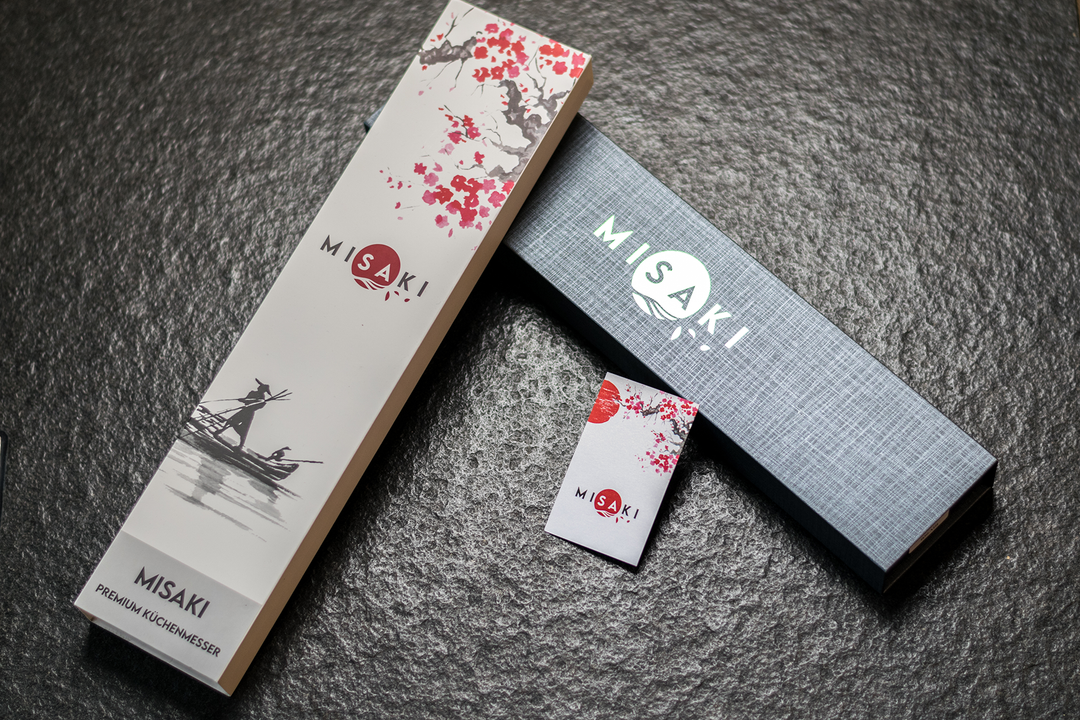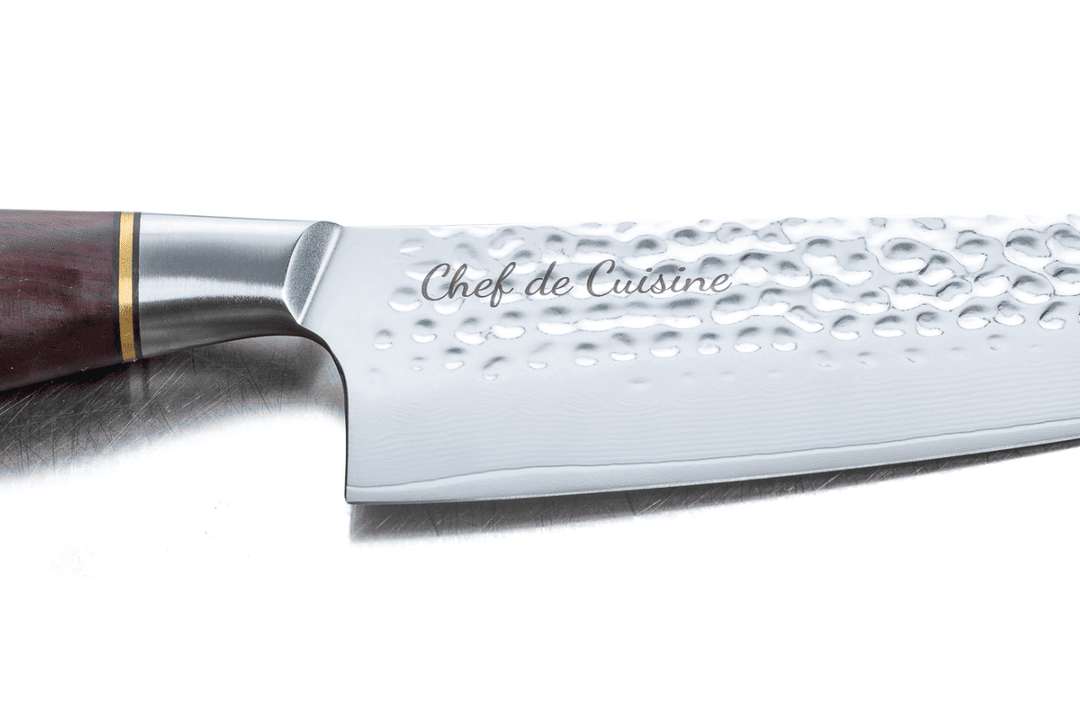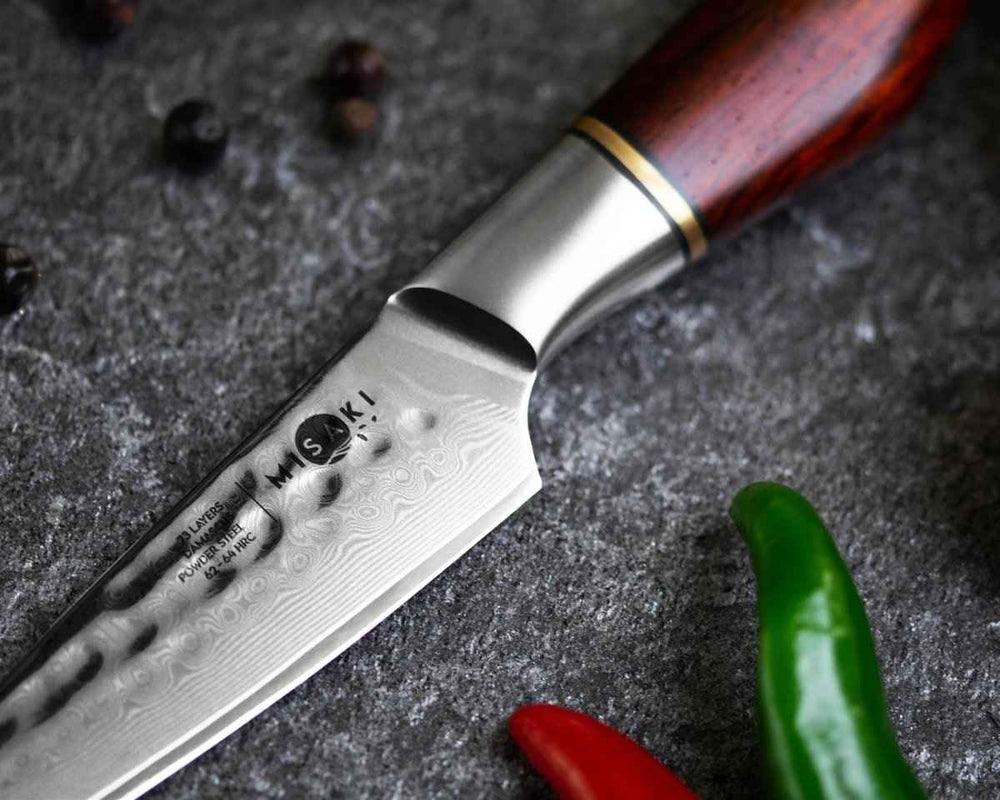Paring knife
Like an extended finger – forged from 73 layers of Damascus steel with a powder steel core for uncompromising precision in detailed work
- ✓Our most precise knife for peeling, coring & exact preparation
- ✓Extreme sharpness & maximum wear resistance with 73 layers of Damascus steel and a powder steel core
- ✓Carefully handcrafted – maximum precision for the highest demands
- ✓Ergonomic dark rosewood handle – powerful, solid and perfectly balanced
- Free standard shipping in Switzerland
- Express shipping available
Illustration



The AKANE paring knife sits securely in the hand and is perfect for delicate cutting work.
Compact, precise, and made from 73 layers of Damascus steel with a powder steel core, it masters everything from peeling to decorating fruit and vegetables—supported by a dark rosewood handle.
Each knife is unique – with individual damask grain and a natural wood handle, which can be engraved upon request to create a truly personal work of art.
MISAKI – where quality meets art.
Fine work tolerates no compromises – precision is key.
The AKANE paring knife gets you to the point: With its needle-thin tip and extremely hard edge, it allows for precise cutting of venison, shrimp, or delicate decorations. Its compact design offers maximum control – even for demanding cuts.
For the finest cuisine at the highest level.
Each blade is hand-ground in several steps and carefully inspected – for uncompromising sharpness, maximum wear resistance, and absolute control with every cut. The fine-grain powder steel core retains its edge exceptionally well and can be precisely resharpened as needed.
Suitable for:


blade
73 layers of hammered Damascus steel with a high-alloy powder steel core (14Cr14MoVNb) and 72 layers of rust-resistant SUS 410 stainless steel.
The vacuum and cryogenic heat treatment creates an extremely fine microstructure with the highest hardness. With a Rockwell hardness of 62–64 HRC, the blade is among the most durable and cutting-edge blades in its class. The niobium content in the core gives the blade extreme sharpness and maximum wear resistance.
The Japanese V-grind with 15° per side guarantees uncompromising precision. Exception: The bread knife uses a single-sided 30° serrated edge.
The characteristic hammering gives the Damascus knife a special character and underlines its handcrafted aesthetic.
Half bolster and full tang ensure balanced weight distribution, increased stability and maximum durability during intensive use.
Handle
The ergonomically shaped handle made of dark, noble rosewood lies comfortably and securely in the hand – even during prolonged use.
Each handle is finely polished several times to achieve a particularly smooth, supple surface that not only looks high-quality but also provides a pleasant grip.
Suitable for left- and right-handed users.

mass
- Total length: 220 mm
- Blade length: 93 mm
- Handle length: 127 mm
- Blade width: 26.8 mm
- Blade thickness: 2.2 mm
- Weight: 120±7 g
- ✔ Wash by hand with mild detergent – then wipe dry immediately
- ✔ Only use wooden or plastic boards as a base
- ✔ Best stored in a knife block or on a magnetic strip
- ✔ Sharpen the blade regularly and oil it occasionally
- ✘ Do not clean in the dishwasher
- ✘ Not suitable for bones, frozen or hard foods
- ✘ Do not use on hard surfaces such as glass, stone or metal


